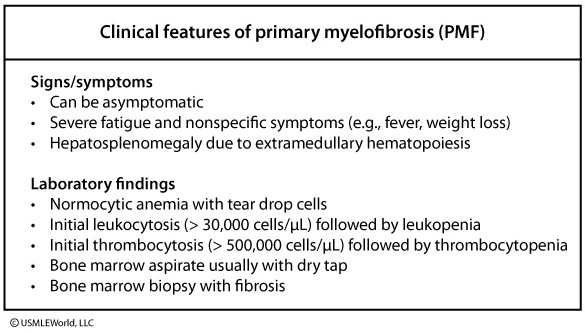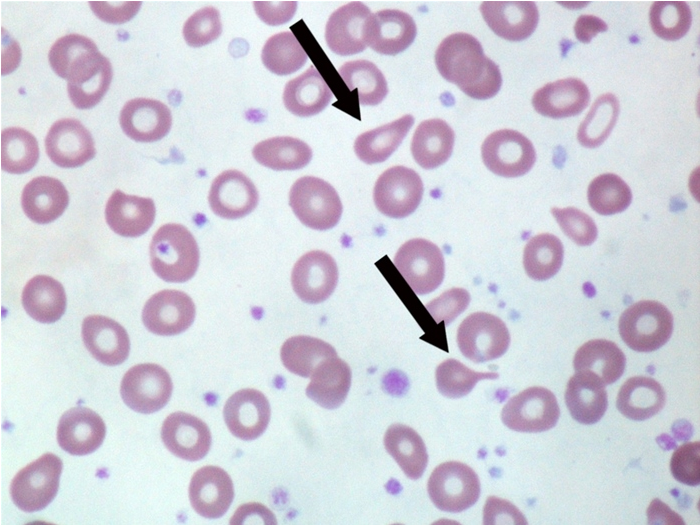myelofibrosis
- related: Hemeonc
- tags: #hemeonc

This patient has normocytic anemia, massive splenomegaly, and teardrop cells on peripheral smear. These findings are consistent with primary myelofibrosis (PMF). Primary myelofibrosis is a chronic myeloproliferative disorder characterized by an overproduction of megakaryocytes and bone marrow stromal cells, which release fibrosis-promoting cytokines into the bone marrow. Most patients initially have leukocytosis and thrombocytosis due to marrow proliferation. However, patients then develop normocytic anemia, leukopenia, and thrombocytopenia as fibrosis replaces the marrow. The end result is extramedullary hematopoiesis manifesting as massive hepatosplenomegaly (hallmark of PMF).

Peripheral smear usually shows characteristic dysmorphic erythrocytes (teardrop-shaped), early erythrocyte forms (nucleated erythrocytes), and immature granulocytes (myelocytes, metamyelocytes, and blasts). This patient needs a bone marrow biopsy to confirm marrow fibrosis and exclude malignant or granulomatous cells, since similar findings can occur with bone marrow infiltration (myelophthisis) by metastatic cancer or infectious granulomata. Frequently, the bone marrow is not easily aspirated in patients with myelofibrosis, often resulting in a dry tap.